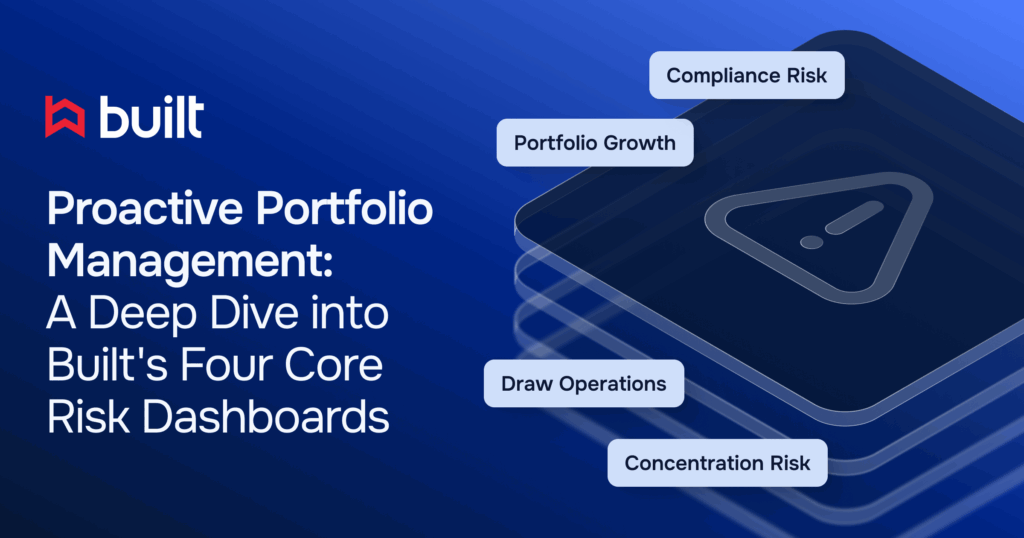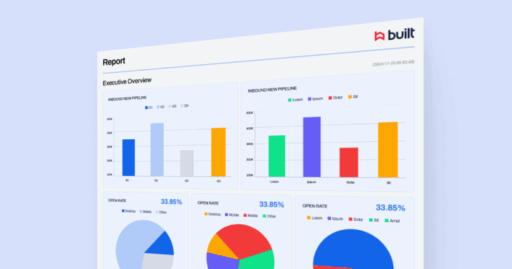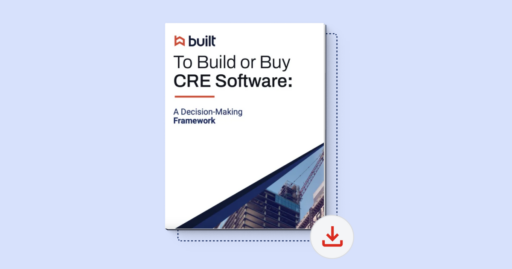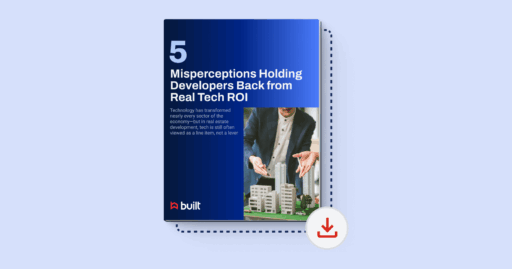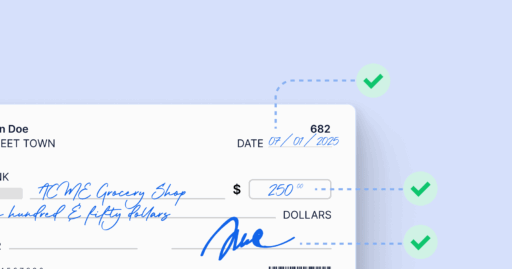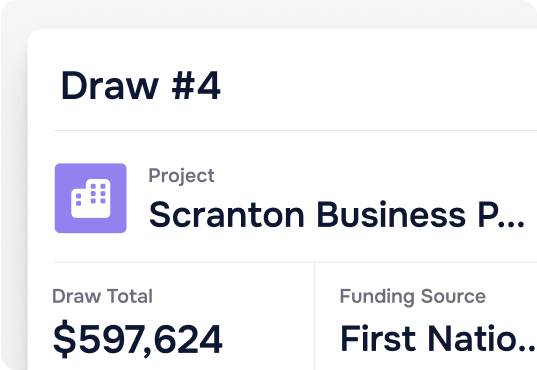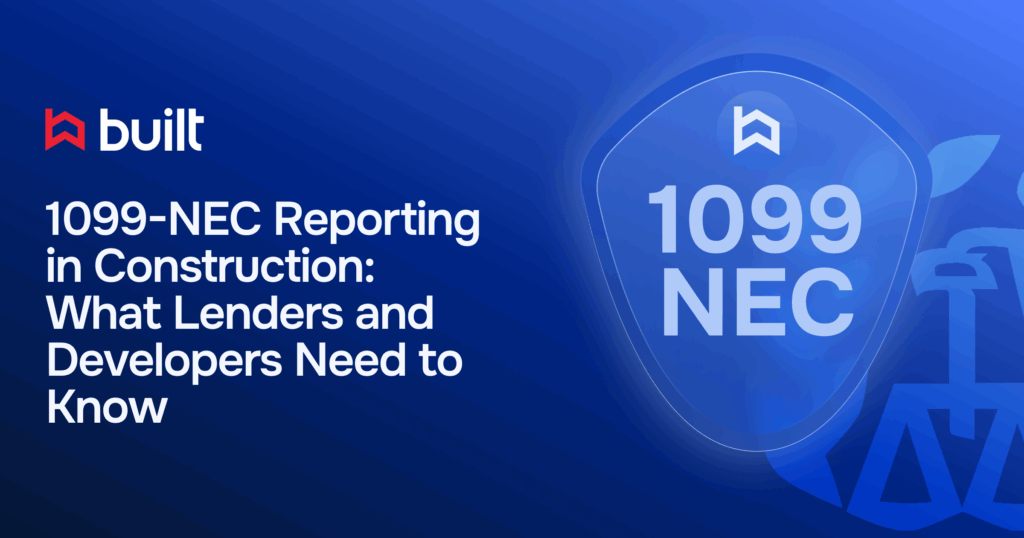
Lenders: Stop Draw Delays and Automate Construction Loan Draw Requests

Even skilled lenders know the construction draw process can slow everything down. But what often gets overlooked are the operational hiccups behind the framework.
Email intake, fragmented tracking, and manual reviews stretch timelines and elevate risk. Throw in rising draw volume, and that friction turns into a deal-killer.
This article explores how inefficiencies in draw workflows create bottlenecks and compromise borrower confidence. More importantly, it shows how forward-thinking lenders are fixing that by leveraging purpose-built platforms and automation for better performance and to scale operations without increasing overhead.
The Operational Bottleneck of Construction Draw Requests
In many lending workflows, draw requests create more friction than lenders realize. Email-based intake, spreadsheet tracking, and disconnected review steps compound delays and introduce risk.
The stakes are higher in construction lending than in most other asset classes. During the 2008 financial crisis, 16.6% of construction and development loans became noncurrent, compared to just 4.4% of other commercial real estate loans (FDIC).
Without visibility into draw status, compliance checkpoints, or updated inspections, lenders risk releasing funds under poor conditions, widening exposure across the portfolio.
Here’s where the friction shows up:
- Fragmented intake and reviews slow cycles: Email submissions, spreadsheets, and scattered files force back-and-forth, extend approvals, and invite errors.
- Compliance gaps raise exposure: Missing or outdated lien waivers, inspections, or insurance are easy to miss in manual checks, increasing lien and legal risk.
- Delays erode borrower confidence: Unpredictable disbursements make lenders look disorganized and put relationships at risk, even when underwriting is solid.
Why the Traditional Construction Loan Draw Process Doesn’t Scale
For experienced lenders, the construction loan draw process is familiar territory. What’s less obvious is how quickly legacy workflows become a chokepoint when draw volume scales.
Draw reviews depend on human processing
Each request includes a mix of invoices, inspection reports, lien waivers, and funding conditions. These need to be reviewed manually often across multiple systems and formats.
As portfolios grow, these one-by-one reviews become a bottleneck. The more projects in play, the harder it is to keep pace.
Scaling creates operational strain
Lenders don’t typically have large back-office teams. When draw volumes double or triple, they either increase headcount or accept longer turnaround times.
Both options carry costs, either in the budget or borrower satisfaction.
Slower reviews lead to slower funding
In construction, delays create inconvenience, hold up payments to contractors, and stall work on-site. As project timelines slip, lenders risk compounding costs and creating avoidable exposure.
This is both a workflow and a scale issue. And without automation, the draw process becomes a limiting factor for growth.
That’s why many lenders are rethinking their approach. Instead of adding headcount or accepting delays, they’re investing in purpose-built software to scale draw operations without increasing overhead.
What Top Lenders Do Differently
In construction lending, disbursement speed matters, but so does control. Top lenders have figured out how to balance both.
Rather than relying on disconnected tools and manual reviews, they’ve embraced platforms that centralize every step of the construction loan disbursement process.
Let’s take a closer look at what they do differently.
Intake starts with the borrower, but on the lender’s terms
Instead of chasing documents across emails and attachments, leading lenders use digital portals that guide borrowers through the request process. These portals are pre-aligned to the loan structure down to the budget line item, so draw packages arrive complete and in the right format.
It’s a better borrower experience, and it ensures that every draw submission enters the system cleanly, with fewer surprises downstream.
Built supports this kind of intake with configurable forms that align with lender-approved budgets and scopes of work. It helps eliminate miscommunication and cuts down the time spent clarifying or rekeying draw requests.
Compliance isn’t checked manually, it’s built in
Traditionally, loan administrators have been the last line of defense for compliance, reviewing every lien waiver, inspection report, and insurance certificate by hand. But as portfolios grow, that approach becomes unsustainable.
Top lenders automate these checks. They use software that flags missing or outdated documents the moment a draw is submitted, reducing review time and catching issues before they slow down disbursement.
Built automates lien waiver tracking, verifies document requirements at each draw, and gives teams a clear view of what’s ready to move forward and what needs attention. That means fewer delays, fewer mistakes, and more time spent on decisions instead of document sorting.
Real-time risk visibility, without waiting for spreadsheets
The faster your lending team can spot risk, the better. But if inspection reports live in one system, lien waivers in another, and budget drawdowns in a third, it’s almost impossible to get a clear picture of what’s happening.
That’s why top lenders use platforms that pull these data points into one place. With Built, every draw is tied to live updates on:
- Project status
- Funding milestones
- Compliance requirements
This means reviewers aren’t working in the dark. This visibility helps teams make faster, more confident disbursement decisions. And when risks do appear (like an outdated inspection or an overdrawn line item), they’re flagged before money moves.
The 5-step automation checklist for draw approvals
Relying on manual, paper-based, or spreadsheet checklists introduces significant risk and delays. By digitizing this process, capital providers can enforce consistency and accelerate verification. This ensures complete audit readiness.
Here is an actionable checklist for automating your construction draw review and approval process:
- Integrate compliance guardrails: Program automated checks into your platform that flag variances immediately. This includes verifying that the requested amount aligns with the loan’s budget line items and that the remaining budget is sufficient for project completion.
- Digitize site inspection reports: Eliminate email attachments and paper trails. Utilize a mobile solution that allows third-party inspectors to upload photos, geo-tagged data, and sign-off directly into the draw management platform. This provides a clean, auditable record and instantly syncs inspection data to the draw file.
- Enforce multi-tiered approval workflows: Automate the routing of the draw request to the correct loan officer, risk manager, and funding department based on predefined rules (e.g., requests over a certain dollar threshold automatically require a Director-level sign-off).
- Automate lien waiver tracking: Lien waivers are a critical risk element. Your system should automatically verify that required waivers from the previous draw cycle have been collected and validated before the current draw request can be approved and funded.
- Enable real-time reporting: Move beyond quarterly Excel reports. The platform should offer a real-time dashboard that shows the current status of all active draw requests, outstanding inspections, and remaining loan balances, allowing your risk team to proactively manage exposure.
By focusing on these five automation points, lenders can transform their draw management from a reactive bottleneck into a proactive, transparent, and defensible workflow.
Accelerating the draw process: 3 Ways to facilitate fast funding
The most common misconception in construction lending is that fast draws mean sacrificing control. The opposite is true: fast, consistent draws are achieved through automated control and high data integrity.
For lenders, facilitating rapid disbursements on construction loans boils down to eliminating friction points before they can turn into delays.
- Mandate upfront document alignment: Speed starts with standardization. Lenders using automated platforms require borrowers to submit all draw documentation (invoices, inspections, waivers) into a single, structured digital portal. Since the portal is pre-aligned to the loan’s approved budget and documentation requirements, the risk of incomplete or misformatted packages drops to near zero. This eliminates the back-and-forth email chains that often consume 1-2 days of review time.
- Automate compliance verification: The biggest bottleneck is manual document auditing. High-performing lenders utilize software to automatically scan for compliance flags, such as:
- Verifying lien waiver dates and signatures.
- Confirming that the inspector’s date is current.
- Cross-checking the requested amount against the budget line item variance. By automating these checks, the loan administrator’s role shifts from error-hunting to high-level decision-making, which drastically cuts approval time.
- Implement direct disbursal workflows: In manual processes, the approval to fund often requires multiple hand-offs to treasury or accounting teams. Automated platforms integrate the approval directly with the funding mechanism. Once a loan officer approves the request digitally, the system can automatically initiate the disburment process—sometimes in minutes—ensuring funds are moved without administrative delay.
Faster Disbursements, Less Overhead
The difference between automated draw management and manual workflows becomes clear when you look at the data and hear directly from lenders who made the switch.
Faster draw cycles, real time payoff
Traditions Mortgage transformed its draw schedules by switching from email-based requests and spreadsheets to a digital platform.
“Being able to open Built’s app on my phone to check any project’s details on demand gives me peace of mind, and allows me to give my clients answers the same day — not wait multiple business days for answers,” says Kathy Brown, Loan Officer at Traditions Mortgage.
This shift led to faster draw approvals, more accurate budget alignment, and projects that ran on time.
Lower administrative overhead, proof in scaling: Zions Bancorporation
Zions managed to grow its residential construction portfolio by nearly 50% without increasing staff by digitizing the draw process.
They credit Built’s platform for turning reactive lien waiver checks into proactive monitoring and centralizing workflow visibility across building teams.
Inspection turn times cut to two days, better customer experience
Truliant Federal Credit Union relied on a single staff member to manage draws manually, including visiting job sites. After adopting Built, inspection turnaround dropped to two days or less, improving transparency and borrower satisfaction.
“It’s a huge lift for the borrower, the builder, and the lender to all see the same data and all be on the same page,” says Cindy Pearson, Director of Mortgage Operations.
Why this matters for lenders
These examples demonstrate how automation can rewire operations for precision, speed, and trust, without expanding teams or sacrificing data integrity.
High-performing lenders are seeing theoretical improvements and are achieving measurable gains with Built.
Ready to Eliminate Your Draw Bottlenecks?
Modernizing the draw process isn’t about working longer hours; it’s about enabling lenders to scale construction lending operations without losing control.
As draw volume rises, manual processes create friction that restricts growth and erodes borrower confidence.
Top lenders are implementing construction loan management software that automates draw intake, embeds compliance, and provides real-time insight into project status.
With Built’s centralized platform, construction lenders streamline every step of the approval process, from submission to disbursement, while supporting a growing portfolio without increasing overhead or sacrificing service.
Don’t let manual draws expose your portfolio to risk. Schedule a walkthrough of Built today and learn how to secure your funding process and scale your construction portfolio.
Lender FAQs for Construction Loan Management Software
How does construction loan management software help reduce manual errors and speed up payment processing?
Manual draw approval processes often lead to delays and errors due to fragmented tools and inconsistent document collection. Built’s construction loan management platform streamlines draw request intake, automates lien waiver verification, and aligns every submission with the approved budget and scope.
This reduces back-and-forth and accelerates the draw process, in turn helping lenders move from request to disbursement with fewer manual touchpoints.
What role does real-time reporting play in construction loan administration and risk mitigation?
Real-time reporting in Built enables construction lenders to monitor project milestones, flag potential risks, and verify that draws align with work performed. This visibility keeps the construction loan administration process secure and efficient, especially for lenders managing a growing portfolio.
Instead of waiting on spreadsheets or chasing down updates, teams get a live view of project progress, compliance, and funding status.
Why are construction loans more complex to manage, and how does Built simplify the process for lenders?
Construction loans involve staged payments, lien waivers, inspections, and ongoing changes, making the lending process inherently more complex. Built simplifies this by embedding compliance into the draw workflow, tracking required documents like invoices and lien waivers, and centralizing all project data.
This makes the loan management process more predictable and scalable, even as deal volume increases.
How does Built support construction lenders in maintaining compliance and reducing exposure to risk?
Compliance gaps like missing lien waivers or outdated inspections introduce risk into the construction finance process. Built helps mitigate that risk with automated checks that validate each draw against current project status and required documents.
Lenders gain peace of mind knowing they have an auditable system that enforces industry standards and protects against overfunding or legal exposure.
Related Posts

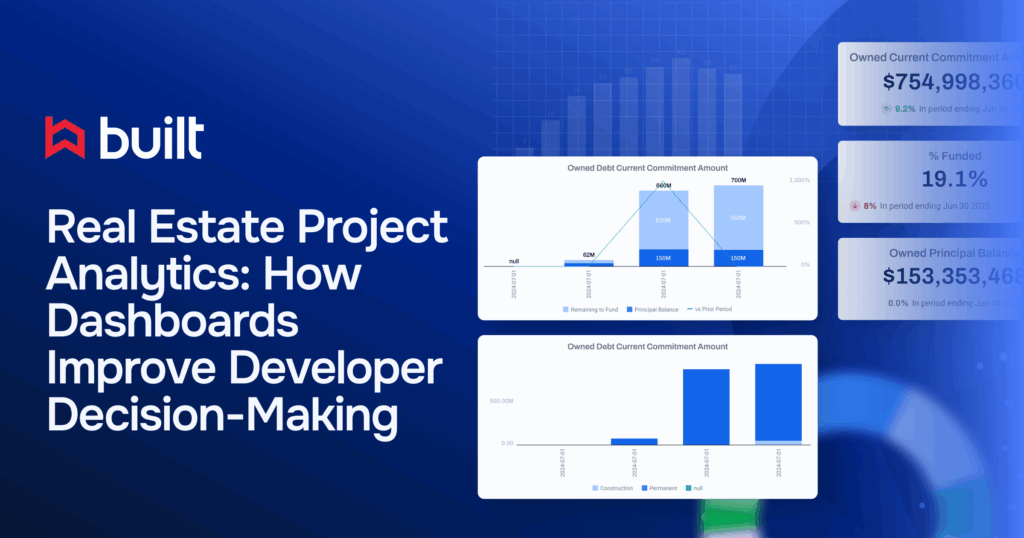
Real Estate Project Analytics: How Dashboards Improve Developer Decision-Making
